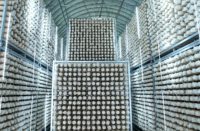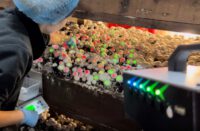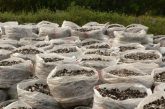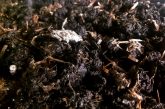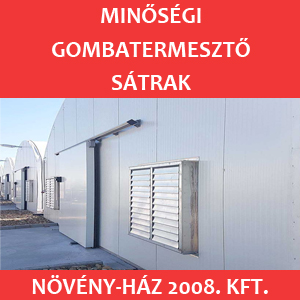In every agricultural sector, competing organisms, pests, diseases which appear to a greater or lesser extent, are inherent in the cultivated crop. Cultivated mushrooms also need to be aware of the appearance of various unwanted organisms. These are most often molds, mushroom flies (fungus gnats), bacteria, and very rarely viruses. It’s no small task to keep them away…
One of the main goals in compost production is to make the compost a “selective” medium, to make it the most suitable for the mushroom to be grown. However, this selectivity is not sufficient to grow only the mushroom on the medium. Unfortunately, no matter how selective the compost is, it also provides nutrients to other organisms. It’s also perfect for green mold, cobweb disease, dry or wet bubble disease and other molds. Poor quality or unknown origin casing soil can also be a source of infections, the mushroom flies larvae and nematodes easily spread in it.
Prevention
The first thing we can do to treat infections is prevention. What is Prevention? To reinterpret the classics: hygiene, hygiene, hygiene.
The 10 most important steps during cultivation when you have to pay great attention to the hygiene rules:
- Purchase high quality compost and clean, uncontaminated casing soil from a reliable source
- Hygienic raw material transport and handling conditions
- Disinfected, gap free, properly cleanable growing house, mushroom tent construction
- Use of clean, disinfected air handling units, fans, filters
- Continuous and regular cleaning and disinfection of production tools, picking knives, buckets etc.
- Maximum compliance with hygiene rules during filling of houses and cultivation
- Hiring properly trained managers, growers and employees
- Proper moving of workers, managers, guests in the growing farm
- Removing of spent mushroom compost, cleaning and disinfection of the room
- Regular inspection and documentation
If at any of these points there is a malfunction of the farm, it is almost inevitable that a pathogen will pop up sooner or later. On the one hand, an infection is likely to cause serious damage by partially or completely destroying the crop, and on the other hand, it is more likely to occur again and again in the future.
It is important to point out that most of the time the mushroom grower recognizes that there is a problem, and by the time the obvious symptoms appear, it is too late. After elimination of major infections, we can only talk about minimize loss… The biggest task at this point is to minimize the loss and complete disinfection before the next growing cycle.
Different types of disinfectants are available for preventive disinfection, the most common of which are chlorine-containing agents (eg Hypochlorides), quaternary ammonium based agents (eg Virocid), glutaric aldehyde or alcohol-containing disinfectants (eg Fink-Virosept). ) other products, which containing lime, sulfur or copper.
Chemical defense
Chemical control is a possible alternative, but only in the initial stages of cultivation should the various authorized substances be used. It is important to note that chemical-free mushroom production is now a basic requirement, but it can only be produced in a Dutch-type growing mushroom. In every other type of mushroom houses, the use of the chemical during cultivation is inevitable. If our growing room is not built specifically for mushroom growing (eg stall, foil tent, chicken farm, etc.), it will require a major overhaul to be suitable for hygienic and efficient production.
Only a few agents are currently available for chemical control in mushroom cultivation. The current list is available in the EFSA Pesticide Database.
In conclusion, I suggest that we try to ensure the hygienic conditions of mushroom cultivation as thoroughly as possible by developing a suitable growing house, mushroom tent. We have to consider very carefully whether we are going into production on farms that are not built for this purpose or don’t meet the technological and hygienic conditions.



